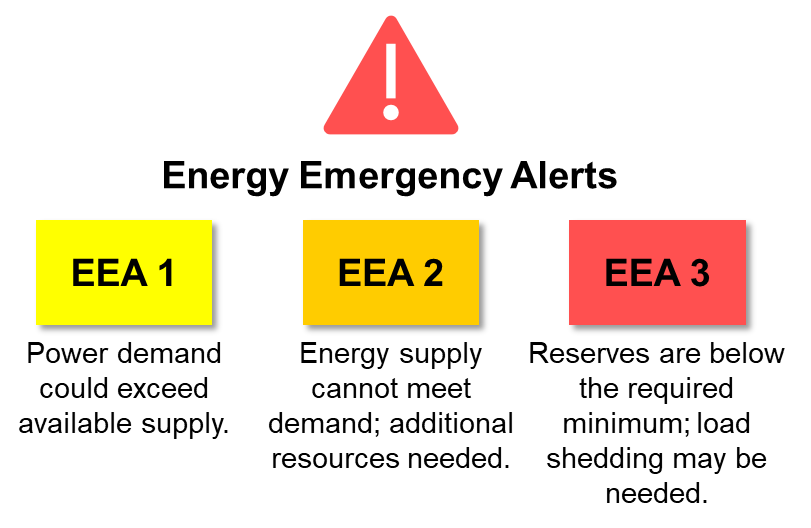
MEAG Power, Participant & Public Power News
Summer 2024
Energy Emergency Alerts - What You Need to Know
Higher year-round energy demand brings increased risks of EEA conditions in both summer and winter.

In September 2023, the effects of an El Niño swept across the southern U.S., raising temperatures in a region already in the grips of a relentless heat wave. In Texas, high electricity demand and critically low reserve margins led to a level 2 Energy Emergency Alert (EEA). The available energy supply couldn’t meet the elevated demand, and additional resources were needed to support the grid.
Four months later, in January 2024, a winter storm in Texas sent temperatures plunging and energy demand skyrocketing to an all-time winter peak record. The state’s power generation and load started to become unbalanced, prompting local officials to ask citizens to conserve electricity use.
While conditions in Georgia didn’t get as severe, MEAG Power set an all-time peak each of the last two summers, and the Reliability Coordinator for the Southern Balancing Authority (that MEAG Power belongs to) issued an EEA level 1 in January when an arctic air mass blew through.
The growth of energy-intensive data facilities and launch of many economic development projects in Georgia are adding increasing, year-round demand on the electrical system. It’s important for Participants to know that strains on the power grid can occur in any season, and that potential impact from severe weather isn’t just a summer phenomenon anymore.
As such, spring and fall are good times to review plans for significant energy events. That includes a quick primer on EEAs, which are issued to prompt steps to maintain grid reliability when available supply and operating reserves are in danger of not meeting demand.
Conservative System Operation Advisories – Watches or Warnings, based on the severity of the conditions impacting the grid in question, usually precede the EEA alert levels. They are an advanced warning that there are known conditions (i.e., storms, hurricanes, extreme temperature changes, potential generation deficiencies) that call for non-essential maintenance to be discontinued and for the system to be on heightened alert.
Think of an EEA level 1 alert as a thunderstorm watch, where conditions exist in which power demand could potentially exceed supply – all available generation resources are in use. EEA level 2 is a step up where emergency energy is needed and citizens may be asked to conserve electricity – load management procedures are in effect. The highest level, EEA 3, occurs when operating reserves go below the required minimums and Firm Load interruption is imminent or in progress. If the need for load shedding continues over a longer period of time, electric utilities may enter into rolling blackouts to share the outages across a number of their customers. While used as a last resort, these temporary, controlled interruptions of power supply help maintain grid integrity and prevent more severe or prolonged outages.
While Georgia hasn’t had to worry much about EEA events in the past, Participants should be aware of the increased risks. If an EEA is ever issued in Georgia, be prepared to communicate with local communities on how to reduce energy use, such as limiting use of EV chargers, washers and dryers, dishwashers, hair dryers, gaming desktops and other large appliances.
Helpful guides to communicating conservation tips to local communities in both summer and winter are available on the MEAG Power website. The APPA also has ready-made resources available to share on its Promoting Public Power webpage. Participants are also encouraged to keep track of up-to-date energy data via the Participant Pages including power loads, current and historical peaks, unit status and market pricing.
Rest assured, MEAG Power continuously plans for such risk scenarios. The most recent update to the Integrated Resource Plan (IRP) includes recommendations to keep Plant Scherer in the portfolio and add solar and battery to the mix, as these resources can supply much needed energy during extreme weather events and other high-demand situations. The IRP also evaluates backup resources for solar energy, such as adding battery storage, to ensure the reliability of the system.
Quick Links:
Meetings & Events
Other Resources
Current is published by MEAG Power
1470 Riveredge Parkway, N.W., Atlanta, Georgia 30328 | www.meagpower.org | (800) 333-MEAG